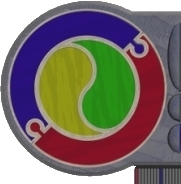The
Three Schema Architecture of a Theoretical Fifth Generation Information
System
The
basis for the theoretical fifth generation database system is the conceptual
layer. At the heart of this system is the conceptual information processor
(CIP). The user transacts with the external layer, transactions are
passed to the conceptual layer and the conceptual layer hands the actual
storage to the internal layer.
i = internal structures
(integers, records, trees etc)
s = elementary sentences (facts)
e = external structures (menus, tables, graphs, 'natural' language
queries)
- INTERNAL = the
data stored in binary on disk (IB); DOS, say (IP); DOS file format
conventions (CS)
- CONCEPTUAL =
Facts stored somehow (IB); CIP; Conceptual Schema
- EXTERNAL = users
'view' of DB (tables or reports); IB = 'Friendly front-end'(application
software); IP = Menu structure? program organisation
The true power of
this model lies in the relative independence of the system - when such
a system is implemented on different hardware to that it was originally
designed for, ONLY INTERNAL structures need re-writing, the rest stays
as is.
IS Interactions
- Queries
- answers from constraints - answers from IB (fact retrieval) - derived
facts (combining facts to form new facts) --> all answers subject
to CIP approval
- Updates
- either ADD a sentence (instance of a fact type) or DELETE a sentence
(to modify, we delete and replace a sentence), also add and remove
fact types and constaints.
Updates can be SINGLE
transactions, or may involve PARCELS of requests (so long as at the
end of the 'parcel', IB is in a valid state, then Parcel transaction
is accepted)
Software Development
Cycle
- Specification
- what the software is supposed to do.
- Design
- plan to meet specification, algorithms and conceptual ideas
- Implementation-
using developmental tools (eg. languages)
- Testing
- every facet trialled, once 'bug free' then beta testing, then release
- Maintenance
-corrective (fixing bugs); adaptive (alterations to suit users); perfective
(improvements)
3GLs- most time
taken up with implementation/testing
4-5GLs -most time
needed in specification and design
We will learn ORM
(Object Role Modelling) (invented by Nijssen, Falkenberg
& Halpin - also called NIAM), also known
more recently FORML
- Fact based analysis
which attempts to describe UoD starting with specific examples.
- procedure well
defined, and uses a standardised diagramming method.
- once the Conceptual
Schema diagram is complete, it is translated into a relational schema
(table design) that is correct and redundancy free (and in OPTIMAL
NORMAL FORM)


